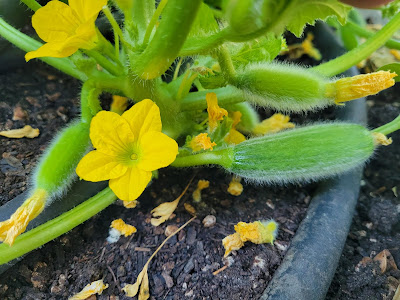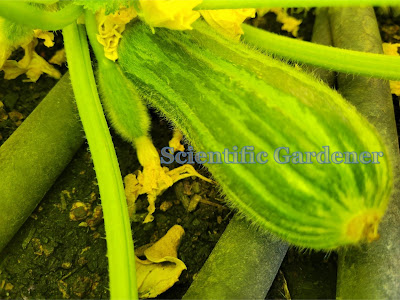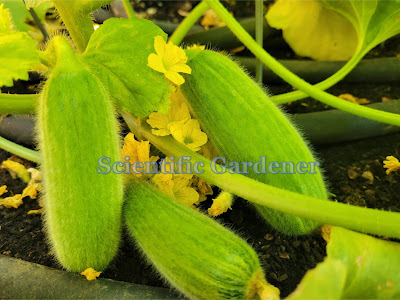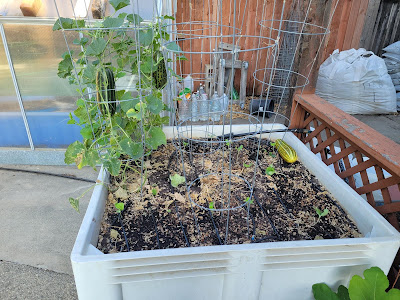With such a rich history in the area of San Donato di Leccese, it is a wonder that the once highly prized San Donato Meloncella required so long for me to be able to get to a point where I could share it with others. While it took a lot longer than I thought, I'm satisfied that at least progress has been made.
For context, I received this variety back before 2020, when I decided to grow this polymorphic cucumber-melon. While the color of the variety exhibited a classic light with splotched form, a dark form, and a medium dark with dark splotching form, the fruit had more problems than just color. A small percentage of the initial plants I grew yielded bitter fruit. While I was able to cull out the bitter fruit and save seed from the first fruits, I was unable to save seed from the second crop - which was free of pollen from the bitter-fruited plants. Prior to the younger fruit being able to mature, the later crop succumbed to the effects of Powdery Mildew. Given the multiple factors required to remediate its deficiencies, it took several years for me to get back to the San Donato. I did, however, blog about the variety back in 2022.
Speaking of 2022, that’s when I finally got back to trying to grow the San Donato. I grew it out in a garden at the college. I would have to say that, given the 40+ hours I spent working on that plot, that it was a complete failure. That being said, I did grow out the San Donato, though not in isolation. Some garden experiences are just an experience – and that is what my San Donato plot was like when I blogged about it in 2023.
Fast forward another two years and I finally moved the San Donato into my backyard. That was close enough for me to really perform the work on the most important concern about the San Donato – removing bitterness from the population of fruit. Given a study done in Sudan, I pursued a method of reducing the bitter traits in the population. I began with an overabundance of seedlings that I planted into the garden bed. I then tasted the leaves of each variety. The seedlings that were more bitter were culled and the rest were left until the plants grew large enough to cull again. This pattern was repeated again and again until there were 8-9 plants left. Then I began tasting the flowers and the immature fruit. If there were any bitter immature flowers or fruit on any plant, then I would pull the plant. Having tasted all the small fruit from each plant and finding none to be bitter, I then left the plants to cross-pollinate and produce whatever fruit they would. This would enable a large enough population to keep me from experiencing bottle-necks with the population the next time I grew out the San Donato.
While I was not able to select for fruit color this time, I was successful in doing what mattered most. Besides a little spider mite pressure, the season when relatively well. While I may not be able to return the Meloncella di San Donato to its former glory, I am grateful that I can work on it enough to be able to share it with others. On that note, you can learn more about the San Donato at Cucumber Shop’s Cucumberpedia page here. https://cucumbershop.com/the-cucummaru-de-san-donato/
















































































































